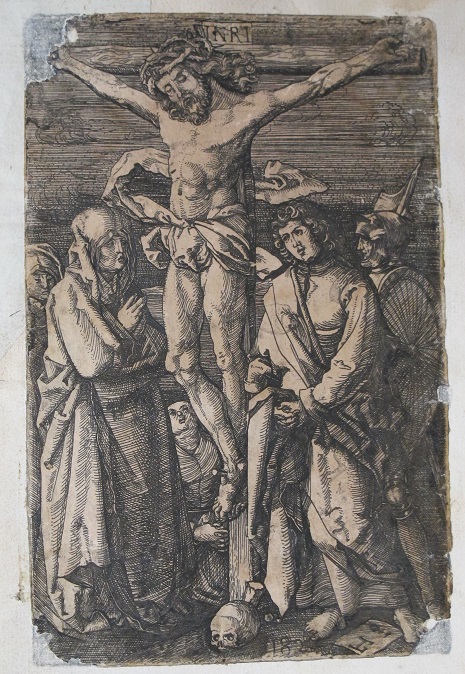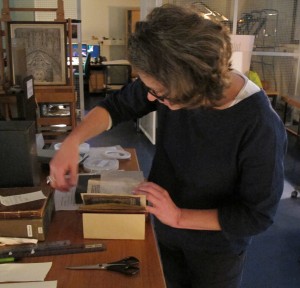Tuesday 6 February 1515 was a sad day for the Venetian literati. Aldus Manutius, the ‘Prince’ of Renaissance printers, had died.
 His death was not unexpected though. He had in fact complained of having been unwell for sometime in the letter dedicated to his former pupil Alberto Pio in his last book, the Lucretius of January 1515. The loss of such remarkable a printer and editor was nevertheless mourned by Venetian scholars, humanists and “bibliophiles”. On Thursday 8 February it was mentioned in his diary by Marin Sanudo, the Venetian politician and chronicler: “Two days ago don Aldus Manutius the Roman died here in Venice; he was an excellent humanist and Greek scholar and was the son-in-law of the printer Andrea [Torresani] of Asolo. He produced very accurate editions of many Latin and Greek works with prefatory letters addressed to many, dedicating a number of little works to me, Marin Sanudo. He also wrote an excellent grammar … This morning, the body having been placed in the church of San Patrinian with books surrounding it, the funeral rites were held. An oration praising him was recited by Raphael Regio, public lecturer in humanita in this city”.[1] Continue reading 'Aldus Manutius (1452? – 6 February 1515) : A humanist printer for humanist readers. Aldine editions at Cambridge University Library'»
His death was not unexpected though. He had in fact complained of having been unwell for sometime in the letter dedicated to his former pupil Alberto Pio in his last book, the Lucretius of January 1515. The loss of such remarkable a printer and editor was nevertheless mourned by Venetian scholars, humanists and “bibliophiles”. On Thursday 8 February it was mentioned in his diary by Marin Sanudo, the Venetian politician and chronicler: “Two days ago don Aldus Manutius the Roman died here in Venice; he was an excellent humanist and Greek scholar and was the son-in-law of the printer Andrea [Torresani] of Asolo. He produced very accurate editions of many Latin and Greek works with prefatory letters addressed to many, dedicating a number of little works to me, Marin Sanudo. He also wrote an excellent grammar … This morning, the body having been placed in the church of San Patrinian with books surrounding it, the funeral rites were held. An oration praising him was recited by Raphael Regio, public lecturer in humanita in this city”.[1] Continue reading 'Aldus Manutius (1452? – 6 February 1515) : A humanist printer for humanist readers. Aldine editions at Cambridge University Library'»
Cambridge University Library is one of the world’s greatest repositories of books, and many of these books contain artworks. Some were printed with the text (book illustrations), some were added to the text after printing (painting and illumination), some were bound into a volume, and some were pasted on by later collectors. Regardless of the kind of image, pictorial elements in books can provide art historians and bibliographers with important information about the interrelated ways in which both kinds of printed material, books and art, were collected, used and valued over the centuries.
The copy of the Opuscula of Saint Bonaventure, Brescia: Bernardinus de Misintis, for Angelus Britannicus, 31 December 1497 (ISTC ib00930000; Inc.4.B.23.12[3713]) has a print of the Crucifixion with the Virgin and St John pasted onto the verso of the third upper free endpaper [Fig. 1]. The iconography, or standard visual formula, is a devotional image of the Crucifixion that traditionally faces the start of the Canon of the Roman Catholic Mass (Canon missae) in missals. The print is undated, and it is signed ‘LH’, the monogram of Lambrecht Hopfer (Augsburg, active ca. 1525–1550), in the lower right corner.

Lambrecht Hopfer’s Crucifixion in the 1497 Opuscula (Inc.4.B.23.12[3713])
The Library’s incunabula exhibition, Private Lives of Print: the use and abuse of books 1450-1550 opened to great acclaim on 23 October 2014. Thanks to a generous donation from the Howard and Abby Milstein Fund we are able to photograph every item in the cases for a virtual exhibition which will remain after the physical display closes. Given the short exhibition changeover period (only eight working days in this instance) the books were photographed in advance, many of them flat or as single pages, rather than in their final cradles.
There has been a great deal of interest from other specialist librarians and exhibition curators in the way we have displayed the books. The process of preparation for this particular exhibition was considerably more intensive than in previous cases; the theme of the exhibition focuses primarily on books as objects, rather than on the texts within, meaning that they need to be displayed in unusual and often unique ways. The Library’s Conservation team leapt at the challenges this created: how to show multiple openings at once; how to hang broadsides as if nailed to the back of the case; how to display a binding and its endpapers simultaneously. Some of the stands took several months to design, and were manufactured by Engineering Design and Plastics, a local firm. Other special features of the display, such as the maniculae pointing at marginal markings in our Gutenberg Bible, were dreamed up only in the last few days of the mounting process and created with a Blue Peter-esque level of ingenuity. The curators and exhibitions officers are immensely grateful to the Conservation team for their patience, imagination and dedication to this exhibition, and a few samples of their work are shown here. Some of the photographs were taken professionally at the exhibition opening, others by a member of staff, so please excuse the variation in quality. Continue reading 'Displaying incunabula: a labour of love'»

A member of the Library’s Conservation department prepares a Book of Hours printed on vellum for photography
To mark the end of the five-year incunabula cataloguing project, Ed Potten and Emily Dourish are editing a volume of essays on some of the treasures of the Library’s early printed holdings. 60 distinguished authors have submitted their pieces (see earlier posts on visits from Sir Quentin Blake and Sir David Attenborough) and the task of creating the page layouts is well under way. The final batch of books was taken to the photography studio last week, and some 400 images have been produced in total for the catalogue and other projects. These images will be of immense value in the future, for teaching, research and publicity purposes, and we are very fortunate to have an in-house Digital Content Unitand a very experienced Conservation team to assist with their creation. Continue reading 'New technologies and old; photographing incunabula'»
 His death was not unexpected though. He had in fact complained of having been unwell for sometime in the letter dedicated to his former pupil Alberto Pio in his last book, the Lucretius of January 1515. The loss of such remarkable a printer and editor was nevertheless mourned by Venetian scholars, humanists and “bibliophiles”. On Thursday 8 February it was mentioned in his diary by Marin Sanudo, the Venetian politician and chronicler: “Two days ago don Aldus Manutius the Roman died here in Venice; he was an excellent humanist and Greek scholar and was the son-in-law of the printer Andrea [Torresani] of Asolo. He produced very accurate editions of many Latin and Greek works with prefatory letters addressed to many, dedicating a number of little works to me, Marin Sanudo. He also wrote an excellent grammar … This morning, the body having been placed in the church of San Patrinian with books surrounding it, the funeral rites were held. An oration praising him was recited by Raphael Regio, public lecturer in humanita in this city”.[1] Continue reading 'Aldus Manutius (1452? – 6 February 1515) : A humanist printer for humanist readers. Aldine editions at Cambridge University Library'»
His death was not unexpected though. He had in fact complained of having been unwell for sometime in the letter dedicated to his former pupil Alberto Pio in his last book, the Lucretius of January 1515. The loss of such remarkable a printer and editor was nevertheless mourned by Venetian scholars, humanists and “bibliophiles”. On Thursday 8 February it was mentioned in his diary by Marin Sanudo, the Venetian politician and chronicler: “Two days ago don Aldus Manutius the Roman died here in Venice; he was an excellent humanist and Greek scholar and was the son-in-law of the printer Andrea [Torresani] of Asolo. He produced very accurate editions of many Latin and Greek works with prefatory letters addressed to many, dedicating a number of little works to me, Marin Sanudo. He also wrote an excellent grammar … This morning, the body having been placed in the church of San Patrinian with books surrounding it, the funeral rites were held. An oration praising him was recited by Raphael Regio, public lecturer in humanita in this city”.[1] Continue reading 'Aldus Manutius (1452? – 6 February 1515) : A humanist printer for humanist readers. Aldine editions at Cambridge University Library'»
